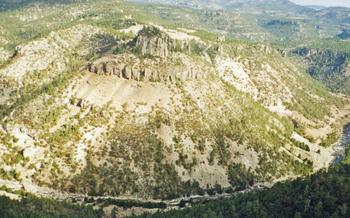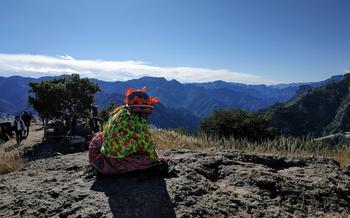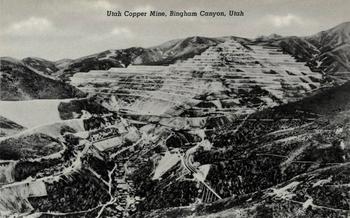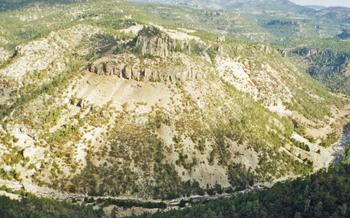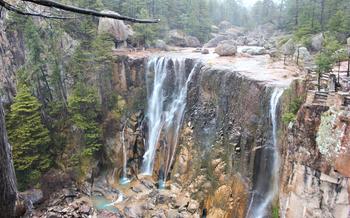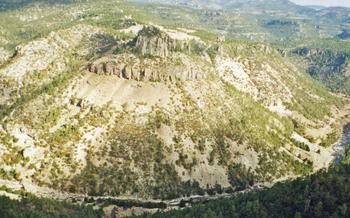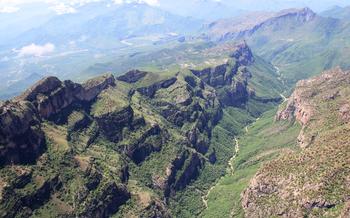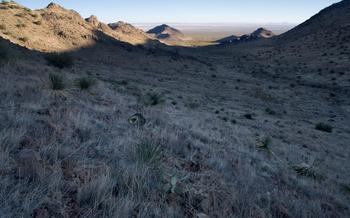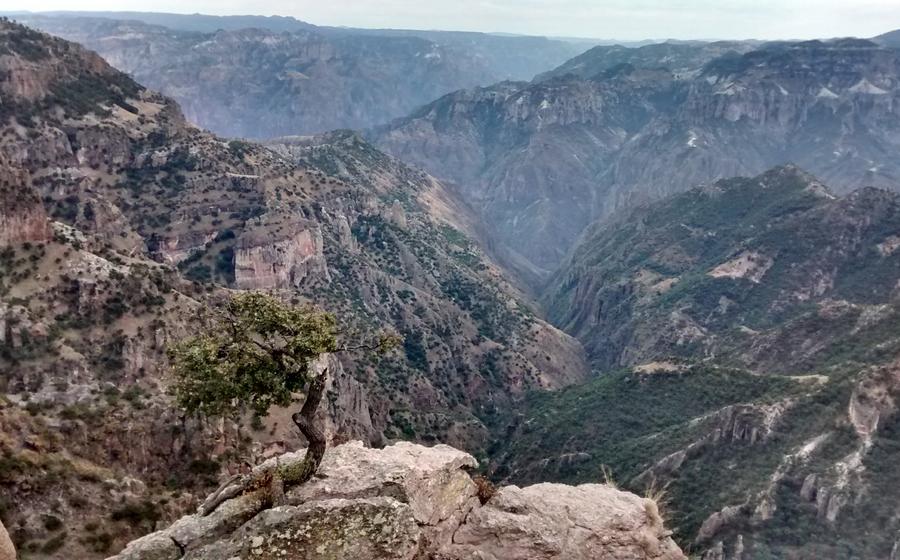
Copper Canyon Ultramarathon Course
- Copper Canyon Ultramarathon Course: A Journey Through Beauty and Challenge
- Planning Your Trip
- Acclimatizing to the Altitude
- Running the Course
- Exploring Copper Canyon
- Visiting the Local Communities
- Cultural Experiences
- Environmental Responsibility
- Budget Tips
- Packing List
- Training
- Nutrition: Fueling Your Body for Success
- Hydration: The Key to Success
- Insider Tip
Copper Canyon Ultramarathon Course: A Journey Through Beauty and Challenge
The Copper Canyon Ultramarathon course is a legendary trail running adventure that traverses the breathtaking landscapes of Mexico's Copper Canyon, the largest canyon system in North America. Established in 1993, this grueling race has gained international recognition for its unique challenges and stunning beauty.
The 50-mile (80 km) course takes runners on a rollercoaster ride through the Sierra Madre Occidental mountains, featuring dramatic elevation changes, diverse terrain, and jaw-dropping vistas. Runners will encounter steep climbs, treacherous descents, rugged canyons, lush forests, and sparkling rivers as they navigate the course.
One of the highlights of the race is the camaraderie among the runners. The shared experience of pushing their limits in such a challenging environment creates a sense of unity and accomplishment. Finishers are welcomed into the exclusive club of those who have conquered the Copper Canyon Ultramarathon, a testament to their physical and mental strength.
For those considering taking on this epic challenge, it is essential to begin training well in advance. The course demands a high level of fitness and endurance, so runners should gradually increase their mileage and incorporate hill training into their routine. Proper gear is also crucial, including trail running shoes, breathable clothing, and a hydration pack.
Embarking on the Copper Canyon Ultramarathon is not just a physical endeavor; it is a journey of self-discovery and personal growth. The course's challenges will test runners' limits, but the rewards are immense: the satisfaction of crossing the finish line, the memories of the stunning scenery, and the camaraderie of fellow runners.
Planning Your Trip
To fully enjoy the Copper Canyon Ultramarathon and the surrounding area, careful planning is essential. The best time to visit Copper Canyon for the ultramarathon is during the dry season, which runs from October to May. During this time, the weather is generally mild and sunny, with little chance of rain.
Getting to Copper Canyon can be done by various means. The closest major airport is in Chihuahua City, approximately 5 hours by car or bus from the canyon. Alternatively, you can take a scenic 15-hour train ride from Chihuahua City to Creel, a charming town within the canyon.
Accommodation options in Copper Canyon range from budget-friendly hostels to comfortable hotels. For a more immersive experience, consider camping in one of the many designated campgrounds within the canyon, offering stunning views and a chance to connect with nature.
Packing for your trip should include essential running gear, such as comfortable shoes, moisture-wicking clothing, and a hat for sun protection. Additionally, bring layers of clothing to accommodate the changing temperatures, a flashlight or headlamp for navigating dark trails, and a small first-aid kit for minor emergencies.
Acclimatizing to the Altitude
Copper Canyon sits at an altitude of over 6,000 feet, which can pose a significant challenge for runners who are not acclimatized. The high altitude can cause altitude sickness, which can lead to headaches, nausea, vomiting, fatigue, and difficulty sleeping. To avoid altitude sickness, it is important to acclimatize to the altitude gradually.
Tips for Acclimatizing to the Altitude:
-
Ascend gradually: Start your trip to Copper Canyon at a lower elevation and gradually ascend to higher elevations over the course of several days. This will give your body time to adjust to the changing air pressure and oxygen levels.
-
Drink plenty of fluids: Staying hydrated is essential for acclimatizing to the altitude. Drink plenty of water and other fluids, such as sports drinks, to help your body stay hydrated.
-
Eat a healthy diet: Eating a healthy diet will help your body to function properly and to adapt to the high altitude. Eat plenty of fruits, vegetables, and whole grains.
-
Get plenty of rest: Getting enough rest will help your body to recover from the effects of the high altitude. Aim for 7-8 hours of sleep per night.
-
Listen to your body: If you start to experience any symptoms of altitude sickness, such as headaches, nausea, or vomiting, slow down and rest. Drink plenty of fluids and eat a healthy diet. If your symptoms do not improve, descend to a lower elevation.
Benefits of Acclimatizing:
Acclimatizing to the altitude can provide a number of benefits, including:
-
Improved performance: Runners who are acclimatized to the altitude will be able to run faster and longer without experiencing the effects of altitude sickness.
-
Reduced risk of altitude sickness: Acclimatizing to the altitude can help to reduce your risk of developing altitude sickness.
-
Better sleep: Acclimatizing to the altitude can help you to sleep better at night.
-
Increased enjoyment of your trip: When you are acclimatized to the altitude, you will be able to enjoy your trip to Copper Canyon more without being held back by the effects of altitude sickness.
Running the Course
The Copper Canyon Ultramarathon course is a challenging but rewarding experience. The course begins in the town of Urique, at an elevation of 1,800 meters (5,900 feet) above sea level. From there, the course climbs to an elevation of 2,700 meters (8,850 feet) before descending to the finish line in the town of Batopilas, at an elevation of 800 meters (2,600 feet). The total distance of the course is 100 kilometers (62 miles).
The course is divided into four sections. The first section is a 30-kilometer (19-mile) climb to the highest point on the course. The second section is a 20-kilometer (12-mile) descent to the town of Batopilas. The third section is a 25-kilometer (16-mile) climb to the second highest point on the course. The fourth section is a 25-kilometer (16-mile) descent to the finish line.
The course is challenging, but it is also beautiful. The runners will be treated to stunning views of the Copper Canyon, as well as the surrounding mountains and forests. The course is also well-supported, with aid stations located every 10 kilometers (6 miles).
The Copper Canyon Ultramarathon is a truly unique experience. It is a challenge that will test the limits of your physical and mental abilities. But it is also a rewarding experience that will stay with you for a lifetime.
Inspirational Stories
There are many inspirational stories of runners who have completed the Copper Canyon Ultramarathon. One such story is that of Maria Lorena Ramirez. Maria is a single mother from Mexico City. She had never run an ultramarathon before, but she decided to run the Copper Canyon Ultramarathon to challenge herself and to raise money for her children's education.
Maria trained for months for the race. She ran every day, even when she was tired or sore. She also worked hard to raise money for her children's education. She sold handmade crafts and baked goods, and she even organized a car wash.
On race day, Maria was nervous but excited. She knew that the race would be challenging, but she was determined to finish. She started the race slowly and gradually increased her pace. She ran through the mountains and forests, and she climbed to the highest point on the course.
Maria was tired and sore, but she kept going. She thought about her children and the education that she was raising money for. She thought about all the people who had supported her along the way.
After 24 hours and 30 minutes, Maria crossed the finish line. She had completed the Copper Canyon Ultramarathon. She was exhausted, but she was also filled with joy and pride. She had achieved her goal, and she had raised money for her children's education.
Maria's story is an inspiration to us all. It shows us that anything is possible if we set our minds to it. If Maria can complete the Copper Canyon Ultramarathon, so can we.
Exploring Copper Canyon
Beyond the ultramarathon, Copper Canyon offers a wealth of activities for visitors to enjoy. Hiking enthusiasts can explore the canyon's many trails, which wind through forests, past waterfalls, and along the rim of the canyon, offering breathtaking views. Mountain bikers can tackle challenging trails that traverse the canyon's rugged terrain, providing an adrenaline-pumping adventure. For those who prefer a more leisurely pace, horseback riding is a great way to experience the canyon's beauty and serenity.
The canyon is also home to a diverse array of cultures and traditions. Visitors can interact with the local people, who are known for their warm hospitality and rich cultural heritage. Indigenous communities such as the Tarahumara, or Rarámuri, have inhabited the region for centuries and continue to maintain their unique customs and traditions. Exploring their villages and learning about their way of life offers a glimpse into Mexico's rich cultural tapestry.
The natural beauty of Copper Canyon is simply awe-inspiring. The canyon is home to stunning waterfalls, such as the Cascada de Basaseachi, which plunges over 240 meters, making it one of the highest waterfalls in Mexico. The Urique River, with its emerald-green waters, winds its way through the canyon, creating a picturesque landscape. The diverse flora and fauna of the canyon add to its allure, with an array of colorful wildflowers, towering cacti, and a variety of bird species calling the canyon their home.
To fully experience the magic of Copper Canyon, it's essential to embrace the local culture and traditions. Visitors should make an effort to learn a few Spanish phrases, as not everyone in the region speaks English. Respecting local customs and traditions is crucial, such as asking permission before entering indigenous communities and refraining from taking photos without consent. Supporting the local economy by shopping at local markets and eating at local restaurants is a great way to contribute to the community's well-being.
Visiting the Local Communities
The Copper Canyon region is home to a diverse array of indigenous communities, each with its own unique culture and traditions. Visiting these communities is a great way to learn about the region's rich history and heritage. There are many ways to interact with the local people, such as visiting local markets, eating at local restaurants, and attending traditional ceremonies.
When visiting the local communities, it is important to be respectful of their culture and traditions. Be sure to ask permission before taking photos or videos, and avoid touching or handling sacred objects without permission. It is also important to be aware of the local customs and dress accordingly.
There are many benefits to supporting the local economy by shopping at local markets and eating at local restaurants. This helps to ensure that the money you spend stays in the community and benefits the local people. It also helps to preserve the local culture and traditions.
Here are some tips for visiting the local communities in Copper Canyon:
- Learn a few basic Spanish phrases to help you communicate with the locals.
- Be respectful of the local culture and traditions.
- Ask permission before taking photos or videos.
- Avoid touching or handling sacred objects without permission.
- Dress appropriately for the local customs.
- Support the local economy by shopping at local markets and eating at local restaurants.
- Be open-minded and respectful when experiencing different cultures.
Cultural Experiences
Copper Canyon is a melting pot of cultures, with indigenous communities, Mexican settlers, and foreign influences all contributing to its rich heritage. Immerse yourself in the local culture by attending traditional dances and musical performances, where you'll witness the vibrant colors and rhythms of the region. Participate in a cooking class to learn how to prepare mouthwatering Mexican dishes using fresh, local ingredients. Visit local markets to browse handmade crafts and souvenirs, and support the local economy by purchasing unique items that reflect the region's artistry. Don't miss the opportunity to engage in conversation with the locals and learn about their way of life. They'll share stories, legends, and traditions that will give you a deeper understanding of the canyon's history and culture. Be respectful and open-minded when experiencing different customs, and remember that cultural exchange is a two-way street. Embrace the opportunity to share your own culture and traditions with the people you meet along the way.
Environmental Responsibility
When exploring the natural beauty of Copper Canyon, it's essential to be mindful of your impact on the environment. Follow the principles of Leave No Trace, packing out all your trash and avoiding disturbing the plants and wildlife.
Conserve water by taking shorter showers, fixing leaky faucets, and refilling your water bottle instead of buying new ones. Reduce your carbon footprint by walking or biking instead of driving whenever possible.
Support sustainable tourism initiatives that protect the environment and benefit local communities. Choose tour operators that prioritize conservation and give back to the region.
Be respectful of the land and its people by adhering to local customs and traditions. Learn about the local culture and history to better understand and appreciate the unique ecosystem of Copper Canyon.
By being environmentally responsible, you can help preserve the natural beauty and cultural heritage of Copper Canyon for generations to come. Every little bit counts, so do your part to tread lightly and leave a positive impact on this incredible destination.
Budget Tips
Traveling to Copper Canyon on a budget is possible with careful planning and a bit of flexibility. Here are some tips to help you save money:
-
Choose affordable accommodation: There are several budget-friendly options available, such as hostels, guesthouses, and camping. Consider staying in smaller towns or villages outside of the main tourist areas to find cheaper rates.
-
Eat at local restaurants: Sample the delicious local cuisine by eating at small, family-run restaurants. These establishments typically offer more affordable prices than tourist-oriented restaurants.
-
Use public transportation: Buses and trains are a great way to get around Copper Canyon on a budget. They are reliable, affordable, and offer a scenic way to travel through the region.
-
Cook your own meals: If you're staying in a hostel or guesthouse with a kitchen, consider cooking your own meals to save money. Local markets offer fresh, affordable ingredients.
-
Take advantage of free activities: There are plenty of free activities to enjoy in Copper Canyon, such as hiking, swimming, and visiting local museums. Ask your hostel or hotel staff for recommendations on free or low-cost activities.
-
Travel during the shoulder season: The shoulder season (May-June and September-October) offers more affordable rates on accommodation, transportation, and tours. The weather is still pleasant during these months, but there are fewer tourists, which means lower prices.
-
Shop at local markets: Support the local economy by shopping at local markets for souvenirs and handicrafts. You'll find unique items at a fraction of the price you would pay in tourist shops.
-
Consider volunteering: Volunteering your time at a local organization or project is a great way to give back to the community and save money on your trip. In exchange for your work, you may receive free or discounted accommodation and meals.
Packing List
When packing for the Copper Canyon Ultramarathon, it's important to strike a balance between bringing everything you need and keeping your pack light. Here's a detailed packing list to help you get started:
- Essential Gear:
- Running shoes with good traction and support
- Moisture-wicking socks
- Running shorts or tights
- Technical t-shirt or tank top
- Windbreaker or light jacket
- Hat or visor
- Sunglasses
- Sunscreen
- Headlamp
- Whistle or other safety device
- First-aid kit
-
Trekking poles (optional)
-
Clothing:
- Extra running clothes
- Warm layers for the evening
- Casual clothes for exploring the canyon
-
Swimsuit (optional)
-
Supplies:
- Food and snacks (energy bars, gels, trail mix, etc.)
- Water bottle or hydration pack
- Electrolytes
- Medications (if needed)
- Toilet paper and hand sanitizer
- Cash and credit cards
- Passport and visa (if required)
- Travel insurance information
- Phone and charger
-
Camera
-
Tips for Packing:
- Pack light and efficiently. Every ounce counts when you're running long distances.
- Leave behind anything you don't absolutely need.
- Pack your gear in a comfortable backpack or running vest.
- Make sure your pack is properly fitted to avoid chafing.
- Be prepared for all types of weather conditions. Copper Canyon's weather can be unpredictable, so it's important to be prepared for anything.
Training
Proper training is crucial for a successful Copper Canyon Ultramarathon experience. Start by assessing your current fitness level and gradually increase your mileage and intensity over time. A well-structured training plan should include a variety of runs, such as long runs, tempo runs, and hill workouts, to prepare your body for the challenges of the course.
For beginners, start with a base of moderate mileage and gradually increase your long run distance by 1-2 miles every other week. Intermediate runners can follow a more structured plan with specific workouts designed to improve speed and endurance. Advanced runners may want to consider hiring a coach or joining a running club to get personalized guidance and support.
Throughout your training, pay attention to your body and listen to its signals. Rest and recovery are just as important as training, so make sure to schedule regular rest days and incorporate cross-training activities, such as cycling or swimming, to prevent injuries. The key is to build up your fitness gradually and safely, and to arrive at the starting line feeling confident and prepared.
Nutrition: Fueling Your Body for Success
Proper nutrition is essential to fuel your body and optimize performance during the Copper Canyon Ultramarathon. Here are some key tips to ensure you're eating right for race day:
-
Pre-Race: In the days leading up to the race, focus on eating a balanced diet rich in carbohydrates, protein, and healthy fats. This will help your body store glycogen, which is the primary fuel source for endurance athletes.
-
During the Race: During the race, it's important to consume small amounts of food regularly to maintain energy levels and prevent bonking. Good options include energy gels, chews, or bars, as well as whole foods like fruit, nuts, and sandwiches.
-
Post-Race: After the race, your body will be in recovery mode. Replenish your glycogen stores and aid muscle repair by consuming a mix of carbohydrates and protein within 30 minutes of finishing. A recovery drink or meal, such as chocolate milk or a peanut butter and jelly sandwich, is a great option.
-
Hydration: Proper hydration is crucial for preventing dehydration and maintaining performance. Drink plenty of fluids before, during, and after the race, even if you don't feel thirsty. Water is the best option, but you may also want to consider using a sports drink to replace electrolytes lost through sweat.
Hydration: The Key to Success
Hydration is essential for runners, especially in the dry and high-altitude environment of Copper Canyon. Aim to drink plenty of fluids in the days leading up to the race and start hydrating early on race day. Drink regularly throughout the race, even if you don't feel thirsty. Sports drinks can help replenish electrolytes lost through sweat. Avoid sugary drinks and alcohol, as they can dehydrate you. Carry a hydration pack or water bottle with a filter to ensure you have access to clean water on the course.
Signs and symptoms of dehydration:
- Dry mouth
- Fatigue
- Headache
- Muscle cramps
- Dizziness
- Confusion
- Seizures
How to prevent and treat dehydration:
- Drink plenty of fluids before, during, and after the race.
- Drink even if you don't feel thirsty.
- Choose sports drinks to replenish electrolytes.
- Avoid sugary drinks and alcohol.
- Carry a hydration pack or water bottle with a filter.
- If you experience symptoms of dehydration, stop running and seek medical attention.
Insider Tip
-
If you're looking for a truly unforgettable experience, consider visiting the Cascada de Basaseachi, the highest waterfall in Mexico. Located about a two-hour drive from Creel, this stunning waterfall plunges over 800 feet into a deep canyon. Take a guided tour to learn about the local legends and traditions associated with the waterfall, and be sure to bring your camera to capture the breathtaking views.
-
For a taste of authentic Mexican cuisine, head to La Posada del Rio in Creel. This family-run restaurant serves up delicious traditional dishes made with fresh, local ingredients. Try the enchiladas verdes or the pozole, and don't forget to save room for the homemade flan.
-
To immerse yourself in the local culture, visit the Museo Comunitario de Creel. This museum showcases the history and traditions of the Rarámuri people, who have inhabited the Copper Canyon region for centuries. Learn about their unique way of life, their traditional clothing, and their ancient ceremonies.
-
Finally, a piece of advice from a seasoned Copper Canyon Ultramarathon runner: don't underestimate the challenges of the course. The high altitude, the steep climbs, and the unpredictable weather can all make the race a difficult one. But if you're prepared physically and mentally, and you embrace the challenge, the Copper Canyon Ultramarathon will be an experience you'll never forget.
